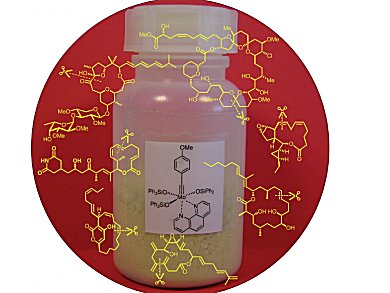Alkyne metathesis originates from heterogeneous catalysis. Already 1968 Penella et al. showed that WO3 on silica is able to scramble 2-pentyne into a mixture of 2-butyne and 3-hexyne. Shortly thereafter, the proposed mechanism of alkyl metathesis was validated and more than one effective catalyst became available. Surprisingly, however, the impact on synthesis remained very limited for a long period of time.
Alois Fürstner, Max-Planck-Institut für Kohlenforschung, Mülheim/Ruhr, Germany, summarizes the history of alkyne metathesis and looks on the remarkable activity, functional-group tolerance, and reliability of the latest generation of catalysts. Numerous applications to material science and natural product synthesis illustrate the excellent performance and structural scope of this method.
Despite a close mechanistic relationship, alkyne metathesis is strictly orthogonal to olefin chemistry and, therefore, ideally suited to the preparation and manipulation of compounds presenting more than one site of unsaturation. Many creative post-metathesis transformations can be envisaged, amongst which modern π-acid catalysis provides a particularly exciting outlook. Fürstner expects that the recent advent of user-friendly alkyne metathesis catalysts will foster exploratory studies along these lines.
- Alkyne Metathesis on the Rise,
Alois Fürstner,
Angew. Chem. Int. Ed. 2013, 52 (10).
DOI: 10.1002/anie.201204513
This issue contains a number of articles from the speakers of the Angewandte Symposium. ChemsitryViews.org broadcasts the event online. Click on the picture blow to find out more or to register for free.





